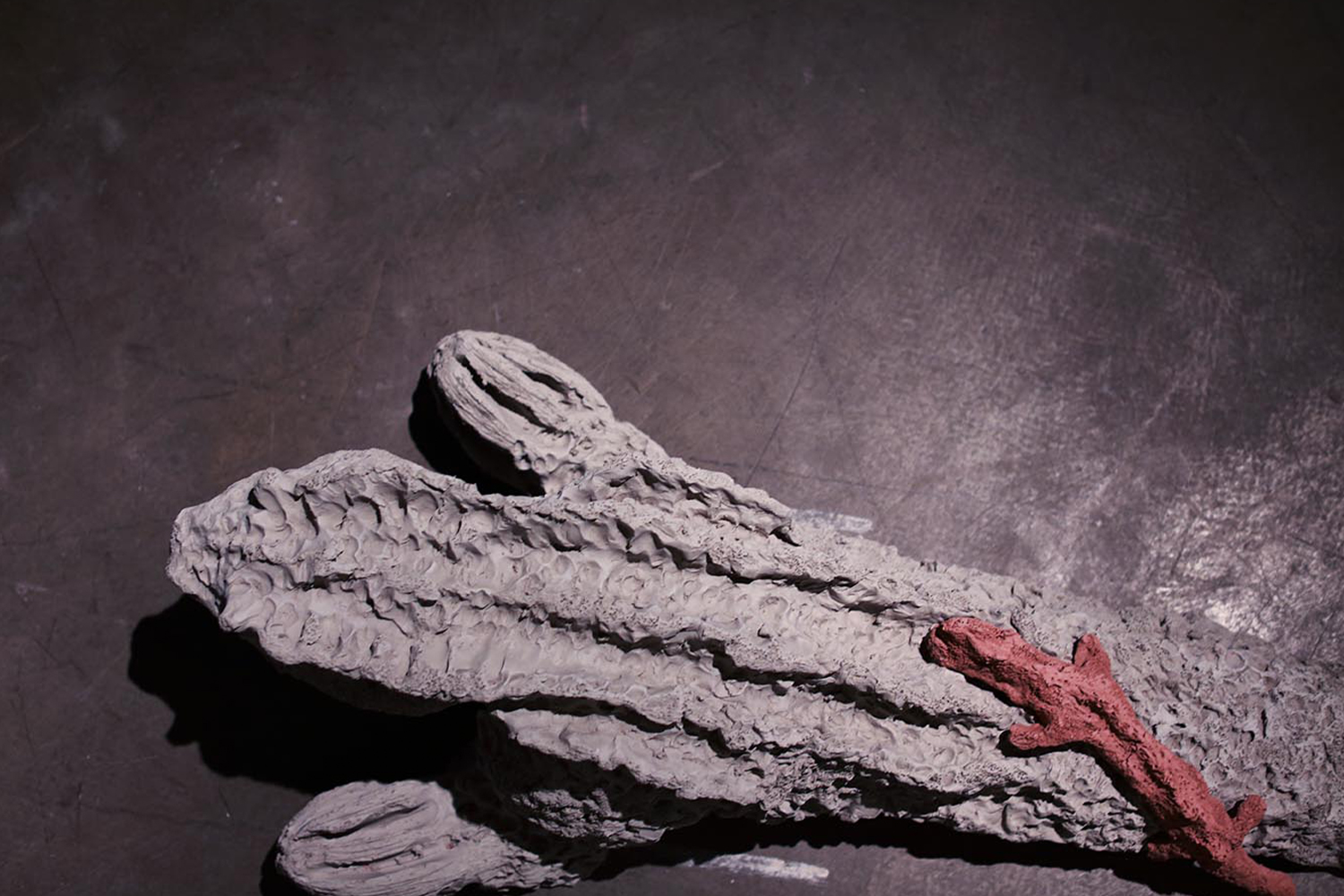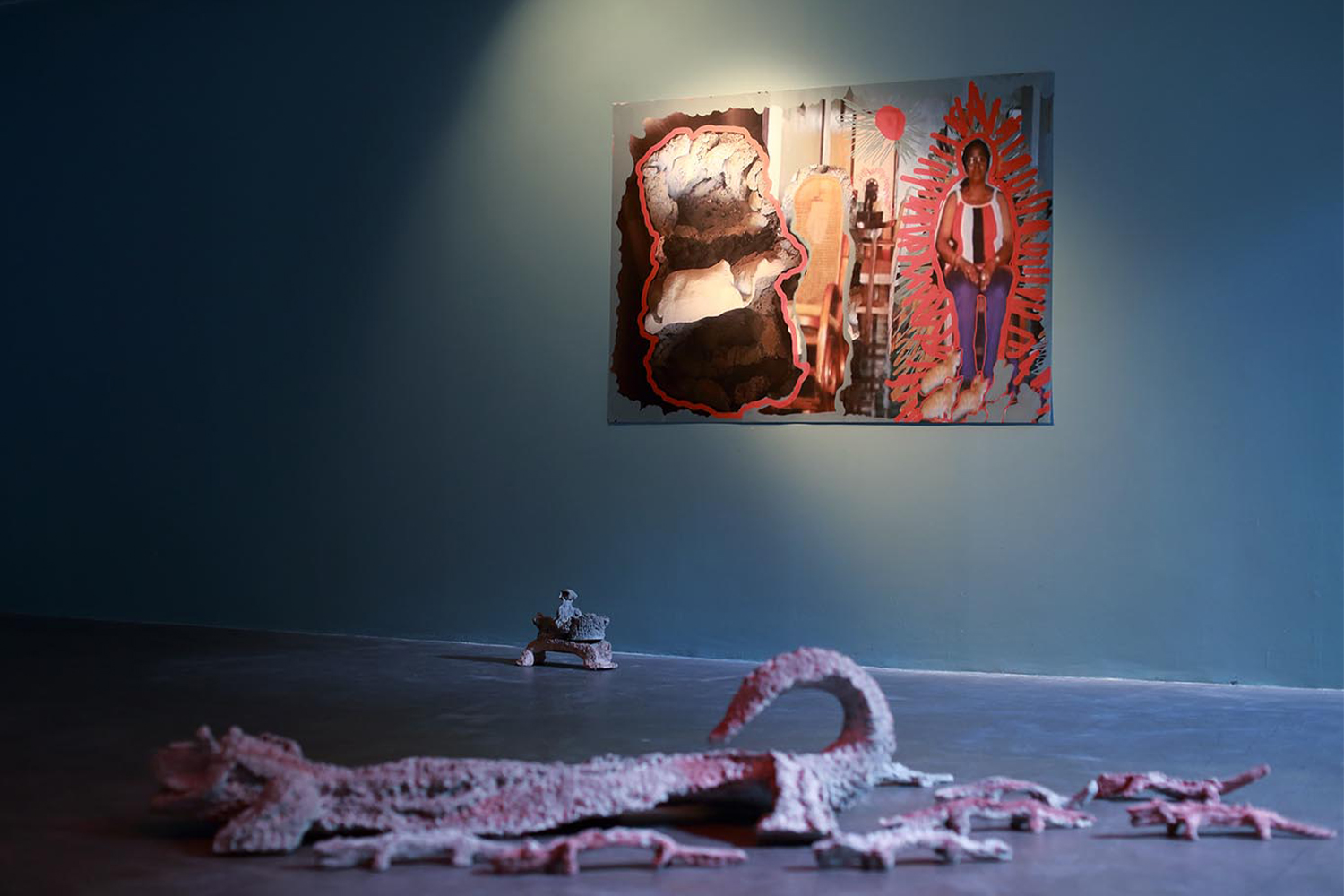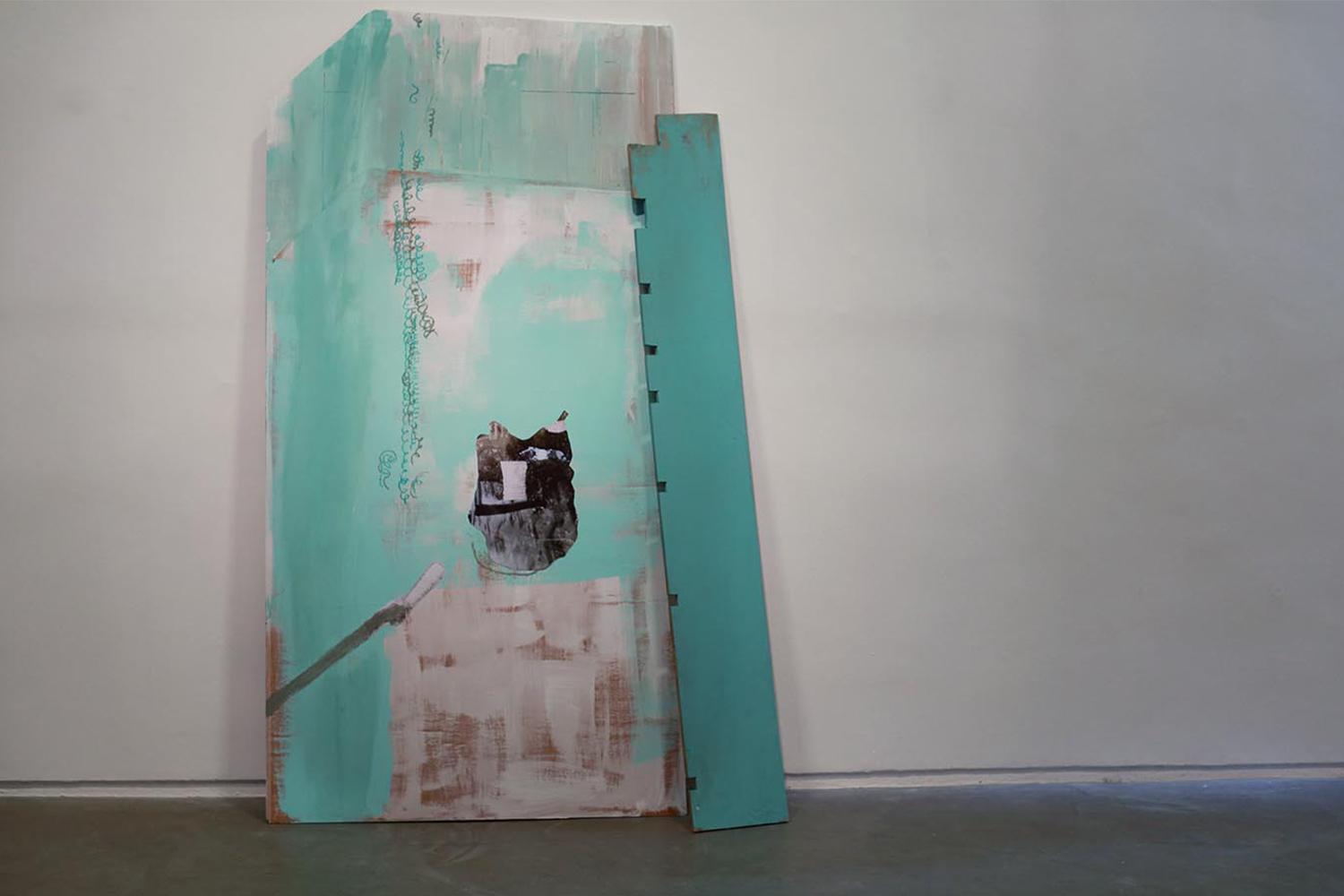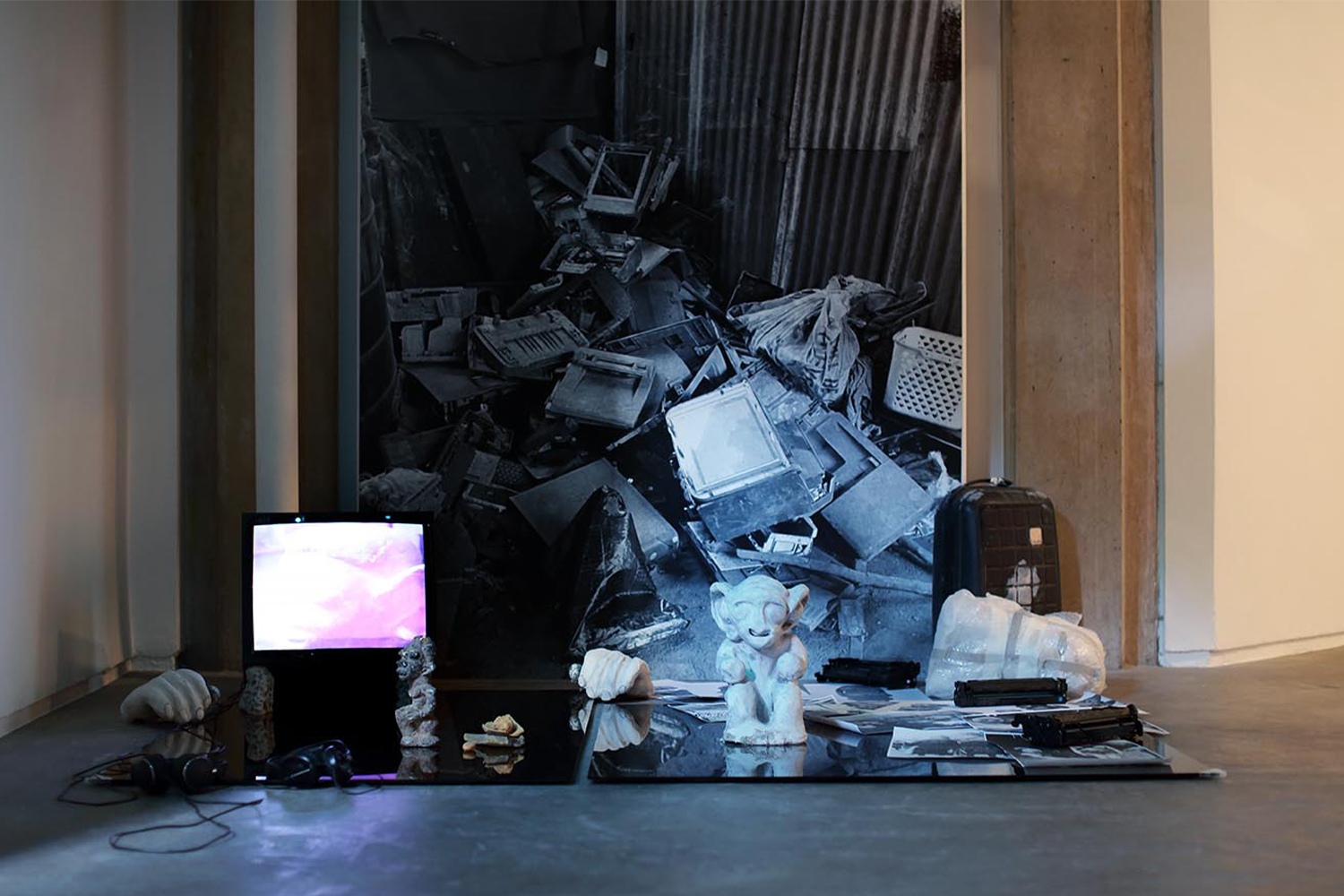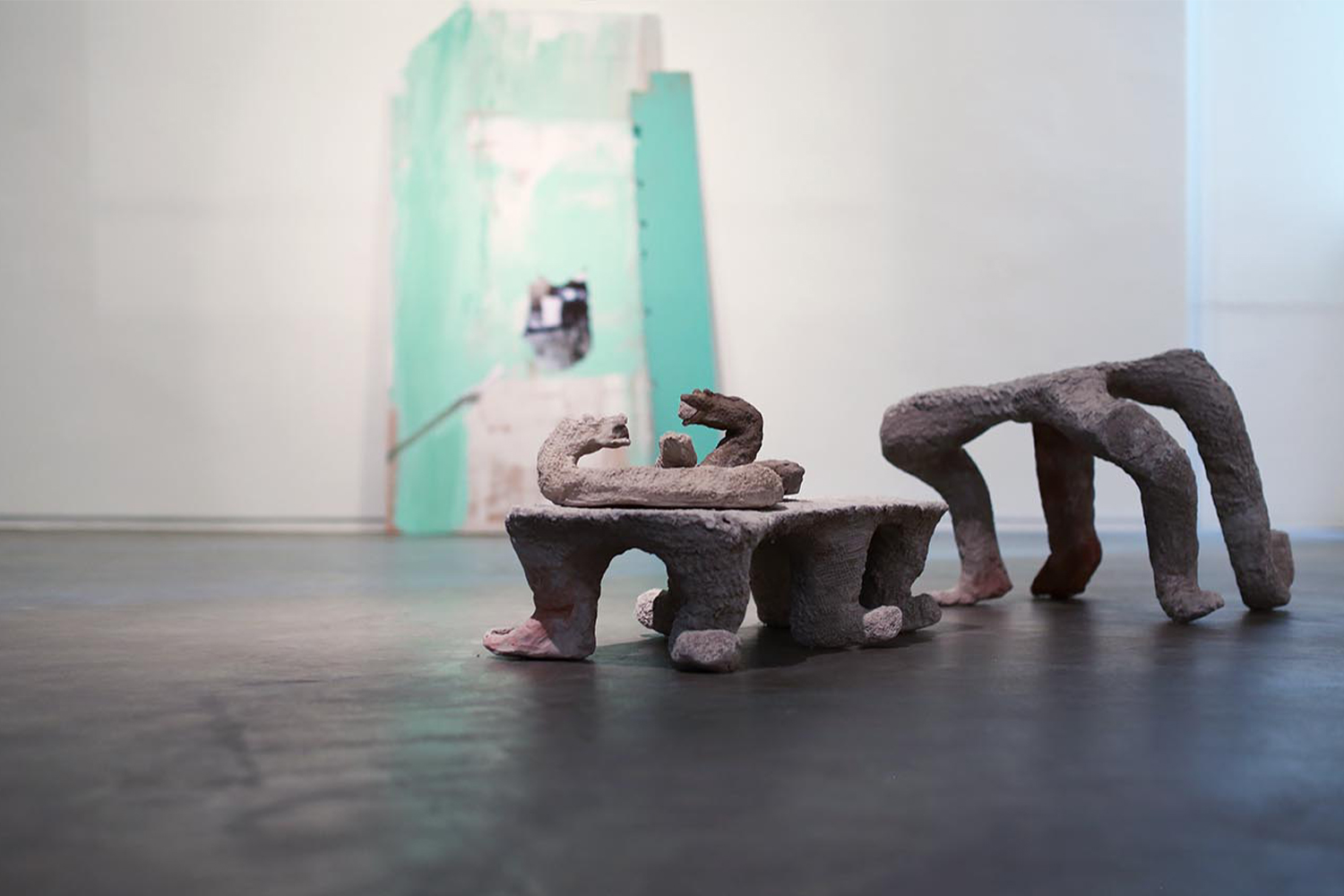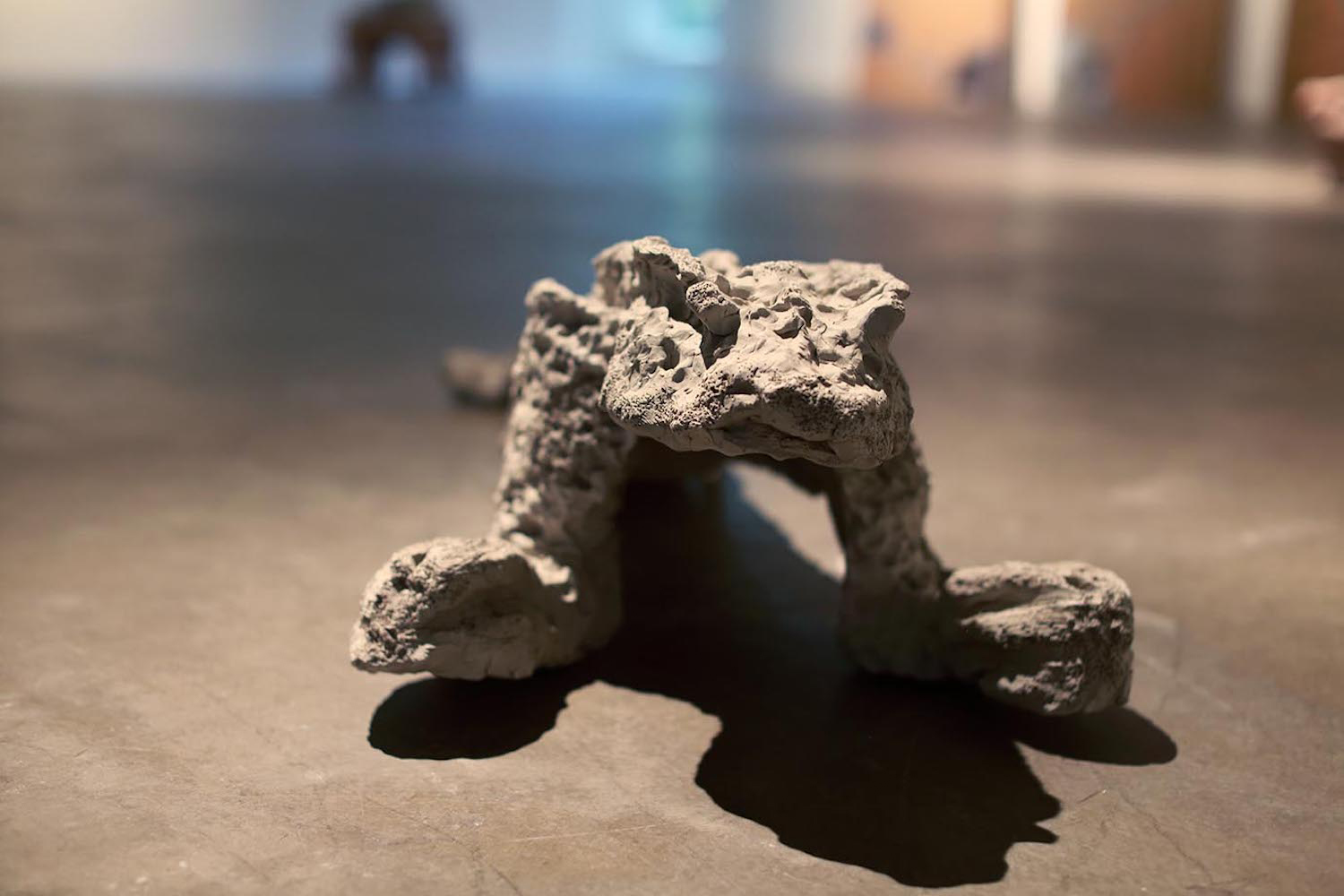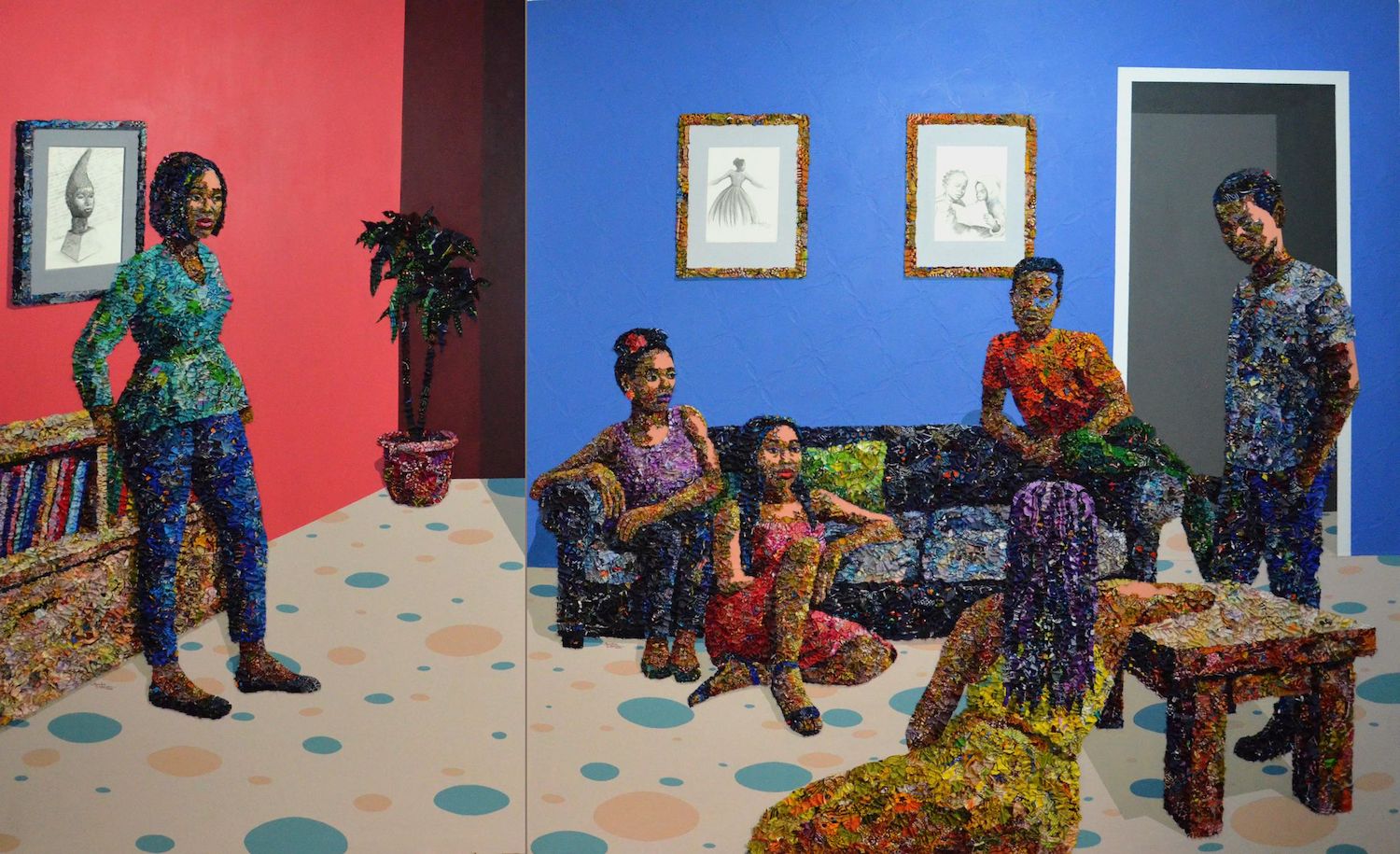Enlarged images from books, personal photographs, precarious structures in various states, platforms, knotted clay ropes, an array of meshed objects made from clay: all are visible across Alice Rekab’s busy and enthralling studio space, located at Temple Bar Gallery + Studios in the heart of Dublin, Ireland.
Rekab’s practice entangles and simultaneously disentangles complex cultural and personal narratives. Over the past decade, the artist has worked in a range of institutional contexts, collaborating with many people locally and internationally. The works take no fundamental form, playing out via moving image, performance, writing, and sculpture, to name but a few instances of their making. Rekab’s latest effort, “Family Lines,” is a multi-platform project taking the form of a solo exhibition of newly commissioned work as well as a public program of workshops developed in collaboration with Éireann and I, a community archive for Black migrants in Ireland; public screenings featuring works by Martina Attille, Black Audio Film Collective, Larry Achiampong, Jennifer Martin, Holly Graham, Zinzi Minott, Ufuoma Essi, Onyeka Igwe, and Salma Ahmad Caller; and public billboards by Alice Rekab and Henrique Paris in collaboration with Cypher Billboard, London. “Family Lines” explores experiences of migration and survival within the family unit, and focuses on Black and mixed-race life in Ireland across generations. I spoke to the artist in their studio as they were preparing to install their exhibition at the Douglas Hyde Gallery in Dublin.
Frank Wasser: Alice, your studio looks extremely busy; there is so much going on that it might be difficult to figure out where to start this conversation. I’ll start with this: “Family Lines” is a project that involves many different artists and ideas. Can you tell me a little bit about the impetus for this evolving body of work?
Alice Rekab: I feel like this project started when I went to Sierra Leone for the first time with my grandmother in 2009. Although this was my first time in Sierra Leone, I had been very close to my grandmother since the time she came to live with me in the 1990s. At that time the civil war in Sierra Leone had just broken out and we had to evacuate her from Freetown. She shared my room with me until we got a flat for her.
She was always this mythical figure to me before I met her. And then she came here and that became a different thing. She taught me how to speak Krio (Krio is a West African Creole spoken in Sierra Leone) and I bonded with her strongly. She was also the darkest skinned person that I’d met in my family. Like, she is the reason that we are a Black family. This was something I always knew, she was an African, but I was also a little kid, and I didn’t really know what that meant or how that figured in relation to my own color or my dad or my brother, who are all different shades of skin.
FW: What was it like going to Sierra Leone for the first time?
AR: Going to Sierra Leone as an adult was an extremely formative experience for me. I suddenly reflected on my family and the things that we did, like the ways that we spoke, the way we arranged things in our homes, and the way that we were in the world. I realized that things I had previously understood as totally localized to my family and our particularity were also cultural, and they were actually part of a bigger thing that I belong to, but also it didn’t look like I belonged to it cause I’m really light skinned.
No one ever thinks that I’m mixed-race. My Irishness is the thing that I wear on the outside, and encountering that feeling of illegibility or not-quite-fitting as someone of African descent has been a familiar experience in my life. Concurrent to this interior experience is the knowing that this illegibility is also why the world comes to meet me in much less hostile ways than, say, my brother Michael, who is darker skinned than I am. For a very long time I never talked about my identity because it just felt too complicated or there was always this demand for the full story and then the disbelief, which also does its own kind of harm.
FW: I don’t recall a project led by an artist this ambitious or as wide-ranging ever happening in Ireland previously. Why now? And can you tell me a bit about why you wanted to work with some of the artists that you invited?
AR: “Family Lines” as a multi-platform project seeks to respond to, and elaborate on, experiences of Black identity in Ireland. Unlike the UK, Ireland has only recently become a multicultural society. The Ireland I grew up in, and the Ireland my father grew up in, were very white places. For example, I had to travel to study in London before I met other artists of African-descent of my own age (thirty-five), and it is now that I see a younger generation of Black-Irish people in their teens and their twenties coming up that this intergenerational experience of Black identity within visual art in Ireland feels very important to amplify. It’s also a story that has not yet been represented in our major visual art institutions to date.
The resonance and wisdom of the Black-British experience, which is reflected in the screening series I programmed as part of the project, becomes very important here too. As our nearest neighbor and our former colonizer, how the British have treated their Black citizens, and their attempts to address systemic injustice through art programs and representation of Black artists in recent times, can teach the Irish establishment a great deal — and this is as much about those issues that remain unaddressed or unresolved by UK institutions as it is the relentless triumph of Black British artists worldwide.
Each of the contributors I have invited to present as part of the “Family Lines” program, both Irish- and UK-based, connect with experiences of identity and elaborate on them in their own distinct and nuanced way, weaving them together with personal and political concerns and presenting works that interrogate, nurture, love, and remember who we are and where we come from. I am deeply proud to present my work in this context and hope that it creates a space and sense of belonging that Black-Irish people can enjoy in our art spaces.
FW: Is there an object or a work which you think gave way to all this work existing?
AR: This is a piece called More Than Two Parents. It’s a small sculpture I made in 2018. I was working in quite a small space at the time, and I was dealing with a lot of family stuff, reckoning with my body, who I understood myself to be, and how I was seen but also reflecting on this idea of intergenerational trauma and inheritance or legacy and how coming from a broken family with parents and different partners coming in and out of your life impacts on that. There is something about the roughness of the materials, the use of different colored clays as representation of different skin tones and the hybrid nature of the object that speaks to what I was processing at the time; the sculpture has something to do with that vulnerability, and I see it as a starting point for the work which followed and became “Family Lines.”
FW: There is a line in Black Skin, White Masks by Frantz Fanon: “Everything can be explained to the people, on the single condition that you want them to understand.” A few weeks ago I was coming in from Dublin Airport towards the city center and I saw your billboards for “Family Lines,” and this complicated provocation by Fanon came to mind. In many ways this is a question that doesn’t necessitate an answer, but what is it that you want people to understand from this project? Is there an answer to this question?
AR: I think wanting people to understand has been a very large feature of my existence. Thinking about my relationships to body, family, nation, and this practice of translation or interpretation — from one language to another, from one culture to another, from one parent to another — has always been part of what I had to do to get by. I think I like the idea that my art practice is my own way of reclaiming those skills, borne of necessity and enmeshed with trauma, and putting them to use for myself in a positive way. Communicating the things that feel important to the people that feel important in the ways that feel important. To that end, I want this project to be understood as making way for future generations and amplifying the histories and present lives of people of color in this country. I do this through the translation of my own family story into the many different media that you see in the show, and I also do this by inviting other people in to share their work. I think I want people to know we are here, we are complex, and we are doing some really interesting things. Come see the show!

